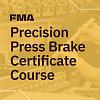- FMA
- The Fabricator
- FABTECH
- Canadian Metalworking
Categories
- Additive Manufacturing
- Aluminum Welding
- Arc Welding
- Assembly and Joining
- Automation and Robotics
- Bending and Forming
- Consumables
- Cutting and Weld Prep
- Electric Vehicles
- En Español
- Finishing
- Hydroforming
- Laser Cutting
- Laser Welding
- Machining
- Manufacturing Software
- Materials Handling
- Metals/Materials
- Oxyfuel Cutting
- Plasma Cutting
- Power Tools
- Punching and Other Holemaking
- Roll Forming
- Safety
- Sawing
- Shearing
- Shop Management
- Testing and Measuring
- Tube and Pipe Fabrication
- Tube and Pipe Production
- Waterjet Cutting
Industry Directory
Webcasts
Podcasts
FAB 40
Advertise
Subscribe
Account Login
Search
Notes on FABTECH
- By Vicki Bell
- November 15, 2007
WARNING: I'm on FABTECH overload. I'm back in my office looking at stacks of press kits about products featured at the 2007 FABTECH International & AWS Welding Show that wrapped up Wednesday.
Held in Chicago, this year's show was the largest I've seen in my nine years with the Fabricators & Manufacturers Association (FMA), co-sponsor of the event with the Society of Manufacturing Engineers (SME) and the American Welding Society (AWS). It also may have been the best. I visited one tube and pipe industry booth and was told that several machines on display had been sold. I asked many exhibitors and attendees how the show was going, and they all said, "Great!"
In the four days I was at the show, I saw many innovative, interesting new products, and I'm sure that I missed many more. Even with four days, it was impossible to see everything. As I began this blog post, two products came to mind immediately, along with one experience that centered around something as important to manufacturing as the right equipment.
Matt Huff of Vitronic, a developer and supplier of image processing systems, gave me a demonstration of the company's VIROwsi 3-D seam inspection device that inspects welded, adhesive, and brazed joints quickly and automatically.
The system detects a seam's length, width, height, volume, as well as porosity, surface voids, and undercuts. This data is compared to adjustable parameters, which determine whether it passes or fails the inspection test.
The system operates with scan speeds of up to 50 m/min (164 ft/min), depending on the application.
Watching the demonstration, I couldn"t help but think about how many man-hours could be saved by automating the weld-inspection process when possible.
A co-worker at the show said that I simply had to stop by Wayne Trail Technologies booth to see the FLEX LASE universal laser processing cell in action. Bob Lewinski demonstrated the system, which combines laser cutting and laser welding in a single-robot enclosure.
I watched as the robot coupled the laser welding head and performed the welding operation. Upon completion, the robot stored the welding head, coupled the laser cutting head, and performed a cutting operation. The transition between operations was smooth and quick.
The self-contained design ships as a complete module, which eliminates the need for onsite reassembly. According to the company, a variety of fixturing, loading, and unloading options are available to tailor the system to specific production requirements or material handling preferences.
Both the VIROwsi and the FLEX LASE are automated systems, which makes them very attractive in an environment in which it is becoming more and more difficult to find skilled labor. However, the third FABTECH highlight that came to mind provided a ray of hope that skilled labor won't become extinct.
At the show, I met a man who was looking for equipment for a junior college's vocational programs. A welding instructor, this gentleman said that he is seeing new interest among educators regarding ramping up vocational and technical programs. He shared an idea in its early development stages that, if implemented and successful, may inspire other school districts in other cities to do the same.
Apparently, educators in the community in which the junior college is located are thinking about turning one high school into a vocational school. I can't reveal the location, but you can bet that if the project comes to fruition, you'll read about it here.
subscribe now

The Fabricator is North America's leading magazine for the metal forming and fabricating industry. The magazine delivers the news, technical articles, and case histories that enable fabricators to do their jobs more efficiently. The Fabricator has served the industry since 1970.
start your free subscriptionAbout the Author

Vicki Bell
2135 Point Blvd
Elgin, IL 60123
815-227-8209
- Stay connected from anywhere

Easily access valuable industry resources now with full access to the digital edition of The Fabricator.

Easily access valuable industry resources now with full access to the digital edition of The Welder.

Easily access valuable industry resources now with full access to the digital edition of The Tube and Pipe Journal.
- Podcasting
- Podcast:
- The Fabricator Podcast
- Published:
- 05/07/2024
- Running Time:
- 67:38
Patrick Brunken, VP of Addison Machine Engineering, joins The Fabricator Podcast to talk about the tube and pipe...
- Trending Articles
How laser and TIG welding coexist in the modern job shop

Young fabricators ready to step forward at family shop

Material handling automation moves forward at MODEX

A deep dive into a bleeding-edge automation strategy in metal fabrication

Precision Press Brake Certificate Course

- Industry Events
World-Class Roll Forming Workshop
- June 5 - 6, 2024
- Louisville, KY
Advanced Laser Application Workshop
- June 25 - 27, 2024
- Novi, MI
Precision Press Brake Certificate Course
- July 31 - August 1, 2024
- Elgin,


























